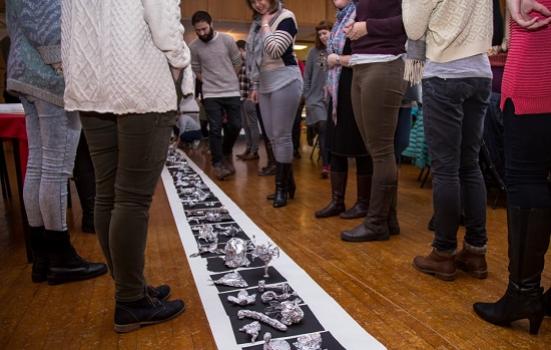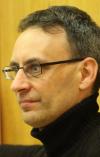A training programme in Wales is helping teachers create environments of "constructive chaos" that their pupils can thrive in, reports David Baxter.

I’ve spent a large proportion of my life trying to bring some anarchy, mischief and chaos into schools. Routines, structures and approaches that propagate order, discipline and a formal organised learning environment can often push creativity to the side. Constructive chaos and assistive anarchy make learning messy. It becomes a room of noise as ideas are thrown about like the foam pies at the end of the movie Bugsy Malone.
If the pupils could be poets, composers, artists and singers, then so could the teacher
Arts Active was formed to support the learning and community programme at St David’s Hall, the national concert hall of Wales, and the New Theatre in Cardiff. We’ve organised performances, workshops and events for schools, and like many other arts organisations, we’ve been exploring the joy, creativity and opportunities presented by making rooms varying degrees of messy.
The Welsh government has recognised the importance of creativity and the arts in learning, and ‘Expressive Arts’ is a significant thread of the new curriculum that rolls out from 2020. In support of this, together with the Arts Council of Wales, it has created Creative learning through the arts – an action plan for Wales.
As part of this plan, we’ve formed an arts and education network in south Wales. One of four sister networks covering the country, it is tasked with creating a programme of professional development, promoting the regional arts offer, brokering relationships between schools and arts organisations, and recruiting a team of teachers to be arts champions.
Networking events
The messy rooms we’ve created are the regular networking events where teachers, artists, school leadership teams and arts organisations join together once a term to discuss practice and problems, and build a shared understanding of how the sectors can collaborate.
Our professional learning programmes are designed to be of equal value to specialists and non-specialists, and the conversations between artists and teachers in the room are where classroom approaches or ideas for residencies begin.
Recognising that many teachers are arts specialists, we aim to feed them as artists and fuel the passion and technical skills of arts teachers. A conducting workshop with the Orchestra of Welsh National Opera, for instance, saw classroom music teachers wield a baton over a symphony orchestra using the support and expertise of an international arts company.
At our professional learning courses, we observed teachers in their comfort zones. Teachers comfortable with visual arts might be adventurous embracing varied visual art practice but shy away from music, and vice versa. But cross-art working is increasingly successful in the curriculum. To encourage teachers to experiment with other artforms, we ran a schools residency project where we could reflect on the learning for the artists and teachers involved.
The Tidy! project started with a series of open questions explored together at a training day, where 24 primary schools each sent two teachers to work with a poet, composer and visual artists. Together we explored approaches to creating a song and artwork for each school, that could give voice to pupils’ thoughts, aspirations, and their responses to environmental and global sustainability issues.
The project kept the power with the classroom teacher. If the pupils could be poets, composers, artists and singers, then so could the teacher. Each artist supported the teachers by presenting strategies and techniques for the classroom, but the creative process and content belonged to the pupils.
The culmination of the project was a large-scale performance where young people presented and performed with support from actors and an opera singer, who created links and a context to the work, and orchestral players, who accompanied their singing.
A digital solution
Training courses, network events and projects are great opportunities to bring people together. But time, geography and capacity puts limits on these, so we’ve also turned to the digital realm.
Our challenge was to find a way to promote skills and opportunities in different regions. A simple online directory of artists didn’t reflect our desire to encourage and support relationships. After many conversations with teachers and artists, we realised the common element everyone brought into the room were opportunities.
An opportunity may be a teacher offering an artist the chance to create music with a year 8 group, or to collaborate on an after-school art club. Or it could be an artist offering a workshop to learn traditional shadow puppetry, or storytelling, or contemporary dance.
After many more conversations and much testing, we were finally able to launch our web app at www.a2connect.org. Artists and teachers post opportunities and we use the technology to match them up. It’s open to all, and the design of the site nudges users to think about the elements that comprise successful arts and education projects.

Our ambition is that the site becomes a way of facilitating easy communication between arts and education, avoiding scattergun mailshots and emails, to provide a platform for artists and teachers to create messy rooms and creative spaces in a multitude of ways.
Schools are an ever more pressured environment for both teachers and learners. Carefully controlled, mutually planned anarchy and mischief can help ensure that staff and pupils can seek refuge in the creative chaos of a messy room.
David Baxter is Head of Arts Active.
http://artsactive.org.uk




